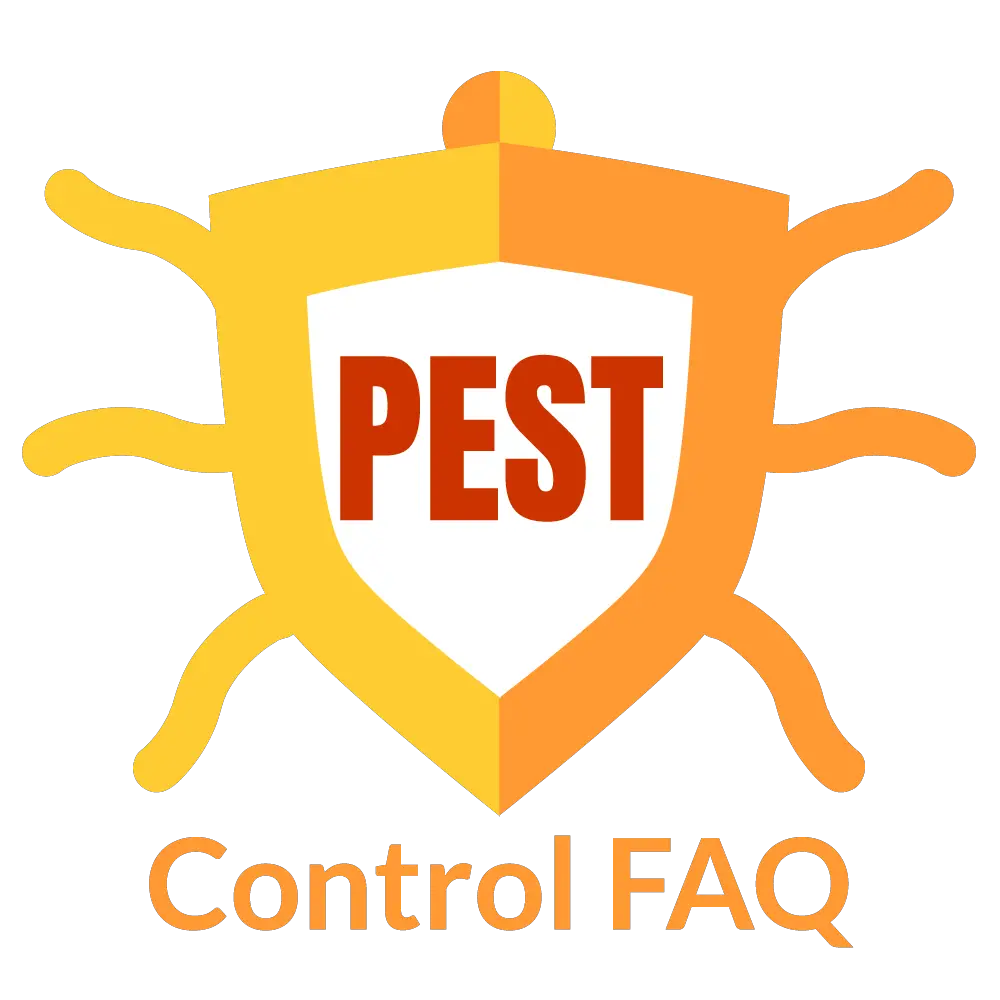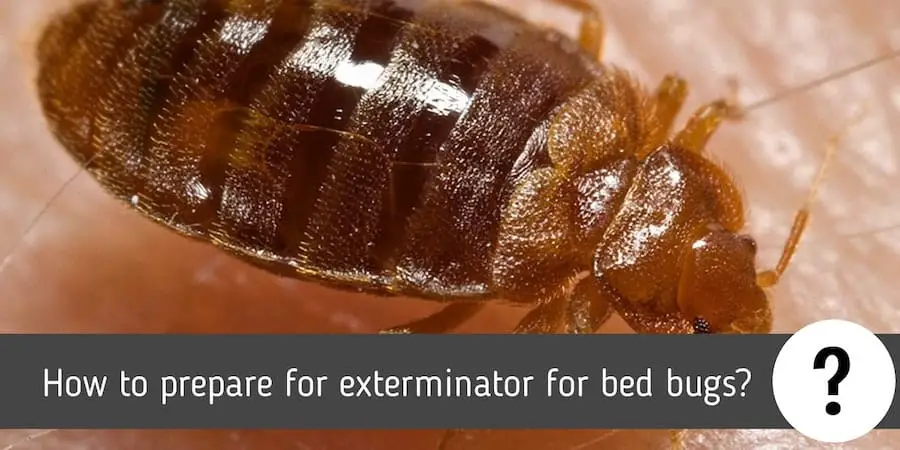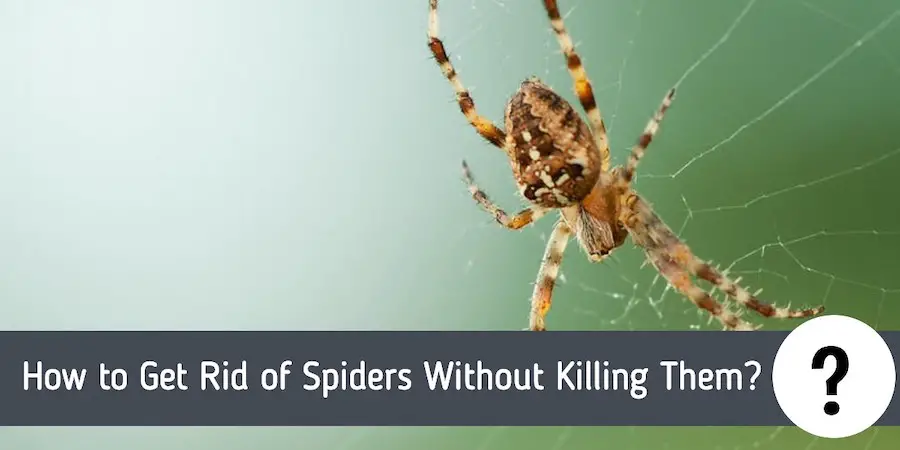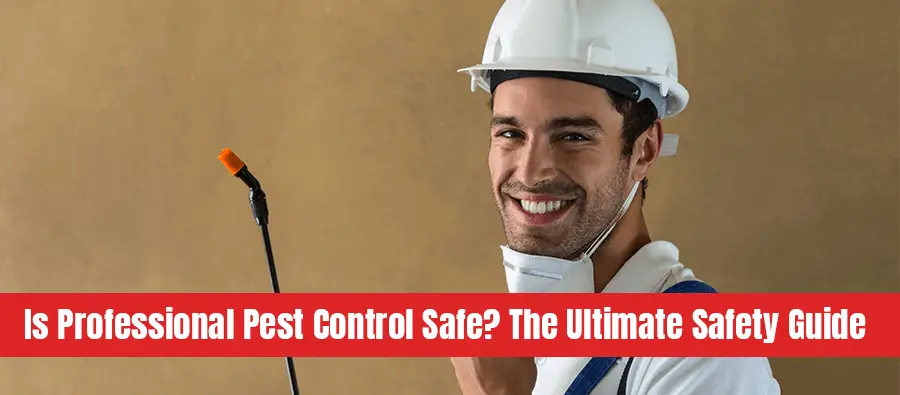Of all the pests that plague human beings, bed bugs tend to cause the most horror. After all, we’re talking about an insect that lives in your mattress and sucks your blood while you sleep. The creep factor increases when you realize you can pick them up from just about anywhere, and they spread quickly, too. It’s no wonder that people want to get rid of them as fast as possible.
The big question is how to prepare for the exterminator for bed bugs? Before the exterminator arrives, remove all bedding from your mattresses. Put all linens, clothing, and other fabrics through the wash set on hot. Store freshly washed and dried fabrics in trash bags or sealable tubs to stop the bug from re-infesting. Empty closets, vacuum every room and move furniture away from walls.
That’s just the quick list to give you an idea of what you need to do for preparation. I’ve covered all the steps in greater detail below. There are also some tips to make this process easier on you and your family.
Table of Contents
How do bed bugs get into the house?
To fully understand the importance of each step of preparation for the exterminator, you need to understand how bed bugs got into your home in the first place.
It’s not your fault. Bed bugs are notoriously easy to bring home. They can come from anywhere. A guest visiting your home could unknowingly have one clinging to their clothing. You might pick one up while visiting someone else. If you’ve stayed at a motel, hotel, or B&B, you might bring a bed bug home from there.
Yes, even the most upscale establishments can get bed bugs!
A bed bug infestation is not a reflection on you or your living arrangements. Bed bugs are highly evolved to spread quickly and silently. They’re also incredibly difficult to see unless you know exactly what to look for.
Where do bed bugs hide?
Minor infestations are hard for the layman to spot, but there are some things you can look for on your own. Bed bugs like to stay near their food source. That’s you and your family. If you spend a good portion of your time in a particular room, chances are good you’ll find bed bugs there.
Some places to look for bed bugs include:
In and around the mattress
Bedbugs love this spot best. Look for blood spots, eggs, feces (little black dots), or adults in the seams, around the head and foot boards, and around the tags.
In and around the box spring
This is a favorite hiding spot because it’s so close to the feeding grounds—your mattress. Bed bugs like to hide between the mattress and box spring and will even crawl underneath to hide inside.
Bed frame
Bed bugs will run into cracks in your bed frame. These are good hiding places as humans rarely look there and hardly ever clean there.
Sofa cushions and recliners
Aside from your bed, you probably spend a good amount of time on your couch or in your recliner. If so, there are likely bed bugs hiding in the cracks between the cushions, under the seat, and in the fabric folds.
The folds of your curtains
Even though you probably don’t spend much time leaning against your curtains, they likely touch the floor, the back of furniture, or rest on the windowsill, which are all places that bed bugs live, hide, and travel through.
That means bed bugs are often found in the folds of curtains. This is especially true if your curtains don’t move much.
Electrical outlets
These dark, warm, dry holes are perfect spots for bed bugs to hide. Nobody cleans these places either, so it’s not likely they’ll be discovered.
Inside appliances
Like many pests, bed bugs have figured out that appliances—large and small—are great hiding spots. They always have seams and cracks, especially where the cords come out, leaving plenty of places to access and hide inside.
Inside drawer joints.
A heavy infestation may even have bed bugs hiding in the joints and seams of drawers.
There is some great information here if you’re interested in more information on bed bugs. This article is intended to focus on the preparation for extermination, so let’s move on.
How to prepare for an exterminator for bed bugs?
A good pest control company will be able to rid your home of bed bugs, but it’s not an easy task. These sneaky insects can get into the tightest spaces and hide. Bed bugs can live in homes for years without being noticed, which gives them plenty of time to spread everywhere.
To make things a bit easier for the exterminator team, and to improve the odds of successful removal, there are some things you can do ahead of time. Follow these steps to prepare your home for bed bug extermination.
Strip the beds completely
Bedbugs love mattresses because this is where it’s easiest to feed on humans. Most people won’t notice the bite while they sleep, and the bugs can quickly escape if humans do happen to wake up. Bed bugs typically hide in the seams of the mattress, but they can also go underneath or even inside of it.
Your beds need to be stripped down to the mattresses before the exterminator arrives. Make sure to take off the dust ruffle and any mattress pads, wraps, or covers. Remove all bedding from the box spring as well.
You may not see the bed bugs as you work, but they see you. Remove all the hiding places that you can so they have to gather on the only places left—the box spring and mattress.
Unless told otherwise, make sure to repeat this process in every bedroom. Bed bugs can travel great distances, so if you have them in one room you probably have them in all rooms.
Collect all fabrics from every room
You need to remove all washable fabrics from each room being treated. You may need to do this to the whole house, so ask your exterminator. Take everything, including bedding, curtains, tablecloths, towels, pillows, and pet bedding. Get all the toys, backpacks, shoes, purses, and other personal belongings, too.
If it’s fabric and it can be washed, it needs to be collected.
Wash everything in hot water
Hot water will kill bed bugs, but it needs to be hot, not warm. Wash everything in as hot of water as possible.
If you cannot wash something, seal it in a large bag or box. For large or damaged items (such as old mattresses or box springs), you can get large sealable bags from moving stores or storage facilities.
If you are unable to wash something, your pest control technician may be able to treat the sealed bag it’s in. Be sure to ask about specific items, however. It’s possible you may need to throw some things out.
Dry on hot, repeatedly
Everything you’ve washed should be dried on hot for at least 15 minutes. Certain items, such as toys or shoes, should be run repeatedly to be sure all insects and eggs have been killed.
You may wish to consider throwing out all stuffed animals, just in case.
Seal everything to prevent re-infestation
Once everything is washed and dried, you will need to seal it all up. You can use trash bags, clothing bags, or sealable plastic tubs. The goal is a completely airtight seal to prevent bed bugs from re-infesting your belongings.
Remove books from shelves to prepare for an exterminator for bedbugs
This probably sounds weird, but trust me. Bed bugs love to hide in any crevice or dark corner they can find. That includes inside, around, and behind, bookshelves. You don’t want to leave anything in the way of the exterminator.
To make matters worse, bed bugs are small enough and clever enough to hide inside of the books themselves. They especially love hardcover books because the pages are usually sewn in with fabric spines and thread. There’s a perfectly dark and hidden space right there in the book.
But not even paperbacks are immune to bed bugs. When you remove each book, be sure to inspect it thoroughly. Turn the pages and look for signs of bed bug activity.
If you’re certain the books are clean, seal them up. If you’re unsure, seal them up and place them in an infected room and let your exterminator know. They may be able to treat the books without damaging them.
Move furniture away from the walls
The exterminator will need access to every possible hiding place for bed bugs, and that includes the baseboards—the place where the floor meets the walls. This is a favorite hiding spot for bed bugs, and it happens to be one of their best ways of moving from room to room without being seen.
Get the furniture and all other belongings away from the wall by at least three feet. This gives your exterminator room to work behind the furniture so no crevice is left untreated. It also makes it easier for you to do the next step.
Vacuum everything
This is going to sound excessive, but you do not want to take any chances with bed bugs. Be sure to vacuum everything that can be vacuumed. Carpets, movable rugs, and picture backs all need to be vacuumed.
Be sure to also get the furniture from all sides, even the back and underneath. Bedbugs like to hide in couches and recliners. These are the second-best place for bed bugs to catch a quick meal while the humans are zoned out on television or catching a quick nap. Remove the cushions and get that vacuum hose in there.
Once you’ve completed vacuuming everything, including windowsills and every crevice, empty the vacuum immediately outdoors. You do not want to empty that in your house. Bed bugs can crawl, so they won’t be very happy to stay in your indoor garbage gin.
Choose an outdoor trash can or dumpster, preferably well away from your house. Dump the contents of the vacuum bin into a sealable bag before disposal. If you vacuum uses bags, put the vacuum bag inside a trash bag before disposal.
Clean the vacuum before bringing it back indoors
Many people forget this step and inadvertently re-infect their house. Be sure to wash the vacuum cleaner thoroughly, following manufacturer instructions. If you’re not sure how to do this properly, call the manufacturer and explain the bed bug situation.
Your pest control technician may have some tips for you as well. If all else fails, they may be able to treat the vacuum while they treat the house.
What do I do with all my stuff while my house is being treated?
It’s not surprising that I hear this question a lot. You’ve just bagged and packed all of your belongings, vacuumed every inch of the house, and now you’re left with piles of things everywhere. It looks like a mess, and it can be unsettling, too. But don’t worry. This is only temporary.
For storage, utilize locations that bed bugs aren’t likely to be hiding. This includes bathtubs, showers, sinks, and counters. Get as much stuff up off the floor as possible.
Don’t put your things in closets or high up on bookshelves unless the exterminator says it’s okay. Remember, bed bugs like shelves! If you place your belongings back on the shelves, even in the bags, you’ve just created a place for them to hide and a chance for possible re-infestation.
Can’t I bring my stuff to a friend’s house?
Not unless you want to give them bed bugs, too. You likely won’t see any bed bugs or eggs hiding in your belongings. By taking them out of the house before treatment by the exterminator, you’ll just be risking exposing your friends to the pests, too.
Oh, and putting that stuff in your car will just infest your car, too. Then you’ll be the mobile bed bug machine, dropping off blood-suckers everywhere you go. It’s just not worth the risk.
By washing everything in hot water, drying on hot, then sealing everything in bags, you’re creating an inhospitable environment for bed bugs. Keep everything in your house unless otherwise instructed by your pest control team.
Bed bug treatment and aftermath
Once your home is prepared for the exterminator team, you will need to leave for several hours. Be sure to take your pets out of the home, and cover your fish tanks with plastic wrap after you turn off the filters and pumps.
Your pest control team will use a variety of methods to exterminate the bed bugs. This can be pesticides, heat, or a combination of methods.
Be sure to leave the house sealed up for the entire time recommended by your pest control team. If you enter too soon, some of the bed bugs or their eggs may survive and you’ll have to start all over again.
What about my stuff?
You will probably need to leave everything bagged or boxed up for several weeks after treatment. This ensures your items are not re-infested by any surviving bed bugs. Sometimes it can take a few days for all the bugs to die, so opening your belongings too soon gives them pesticide-free places to hide.
Follow your exterminator’s instructions for reintroducing your items back into the home.
Related Questions
How long does it take to fumigate a house for bed bugs? This process usually takes several hours. It can be as short as 4 hours, but can also go as long as 48 hours. Bed bugs are hard to eradicate, so patience is necessary.
Can bed bugs go away on their own? No. As long as there is a food source, bed bugs will continue to feed and breed.
Do bed bugs move from room to room? Yes. Bed bugs can crawl very well and they are masters at hiding. They can move on their own, but often hitch a ride in bags or purses, shoes, and on your clothing.





